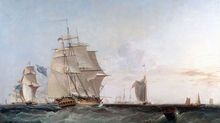Creating your own Book Cover

So when I first started I was a bit of a cheap skate and there are some very convincing websites that say that you can make your own cover on word. Well you can but very low resolution. I would invest in photoshop if I were you. It is not hard to figure out at all.
Here are some tips I discovered making my own covers.
Tip #1
Size matters. Photoshop is one of the best ways to change the size and make sure your image maintains it resolution. But if you want to use something else I recommend image converters. Here are some jargon you might need to know about size. DPI stands for dots per inch. You need at least 300 DPI for most publishers. Resolution is just how grainy a picture is. The better the resolution the less grainy it is. When you resize something be careful that you don't lose any resolution or lower the DPI
Tip #2
Free is good, but paid is better. I started off getting my images from places like Morguefile. This site allows you to use the images for free as long as the image isn't what you are making the money from. So, putting it on books is fine as you are making the money from the book and not the image. There are plenty of places where you can get stock files but the ones where you pay a little to get the images have much better images. If you are doing a lot of book covers I would recommend Dollarphotoclub (since I wrote this post they have been bought out by Adobe). They have a subscription and you can get the images for $1. Some even have a tab where you can look for images that are undiscovered and mean only a few people have downloaded it.
Tip #3
Put on a mask. The thing I love the best about photoshop are the masks. So Layer your images on top of each other and then click on an image at the bottom of the layer that looks like a white dot in a grey box. Black out the bits on the white box that appears next to the layer and it disappears like magic. Of course there is more to it and you and you can look at tutorials on YouTube. There are dozens, some that don't have annoying voices as well.
Tip #4
Learn the shortcuts. If you are using photoshop learn the shortcuts. They make life so much easier. Of course I forget them all the time and it seems the only one I seem to remember is Ctl T. Which allows you to change the size and position of the layer.
Tip #5
Pick your fonts carefully. You want something that illustrates what your book is about without being fussy. You can go with the tried and tested. Like these. I'm a fan of Trebuchet for the front of a cover. Use more than one font but don't get carried away. There are plenty of people who have opinions on fonts. Like booksat or Coverdesign
Tip #6
Less is more. Don't crowd your cover with too many images. Have images that you do have pointing inwards as it draws your eye in. Have a theme color that simplifies your design.
Tip #7
Don't brag. Okay, this is a rule of thumb for how big titles and author's names should be and purely from reading a crap load of books. New authors have little names and massive titles. After all most people will remember the name of the book over who wrote it. I know a knock to the ego but true. If you are a famous author then you have your name bigger than the title because it will be your name that sells your book and not the title. So, don't brag. Keep your name smaller than the title and when you are rich and famous you can make it take over the cover.
Tip #8
Make up a few covers. You will be able to choose a better cover if you don't put all your eggs in one basket. Make up a few mock covers until you like one better than all the others. Then work on that one till it is perfect. You'll get a better result and be happier for the extra bit of work.
Tip #9
Fibonacci is the bomb. Google this mathematician. He actually would have made a good artist. When you are creating pieces of art you want to draw the eye around the canvas and you want areas where the eye can rest. Fibonacci has a very good system that tells you where to put the busy stuff and where to allow the eye to rest.
Tip #10
Last but not least, drop shadow is not your friend. It is better to use a colour of contrast to the image behind it rather than a drop shadow though if you need a drop shadow an alternative is to put a black layer and reduce the opacity to make the area behind the writing darker and then put in a white text. You will be surprised at how well it will stand out. Now this could be another tip but really is more a complaint. You don't need to read anything on your cover when it is a thumbnail. I don't read thumbnails, I click on books because they look interesting. If you spent the page splashing your name you wasted an opportunity. A reader can look up you name right next to the thumbnail. Book sellers online are nice like that.
I found making the covers of my books very satisfying. I added my own work and scanned it and worked with those images and that way I can guarantee that no one has a cover like mine even if I use stock images.
























